The Power of Community: A Motorcycle Journey from India to Scotland

In January 2017, Ben and Prashant left behind comfortable lives to explore a project-driven motorcycle journey of community service and adventure - across 60,000 km and 20 countries.
With a strong vision of Vasudhaiva Kutumbakam – “The whole world is one family” – Ben and Prashant help projects in education, housing, and skills training with communities in remote areas from India to Scotland: one motherland to another on their Royal Enfield.
This is Vasudhaiva Ride.
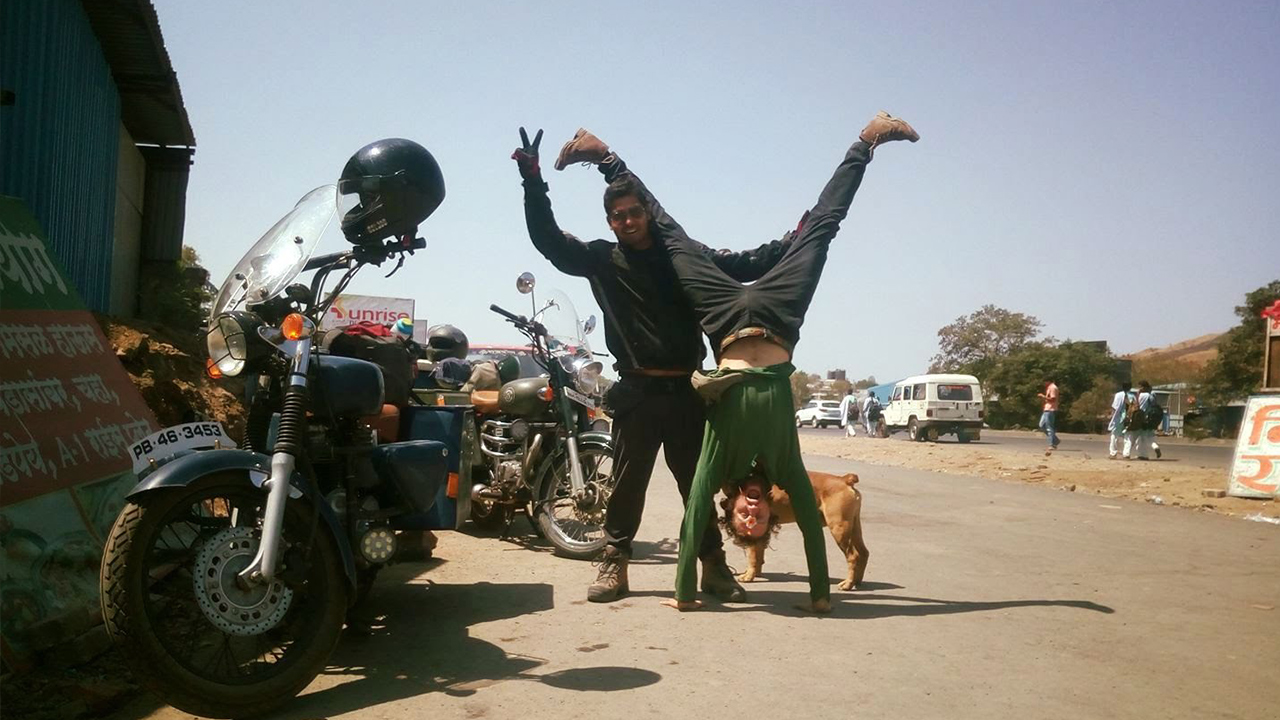
After 17 months of motorcycle riding, and five service projects in three countries, Ben and Prashant feel certain and optimistic about three truths: humans thrive in communities, sustainable design can save the environment, and the road to discovery is emergent in nature.
The duo tells us about their vision, values, experiences, and commitment to community service and sustainability.
“The world is one family”
Ben and Prashant have a powerful and inspiring vision to create a better world. That’s how they set out on the journey of Vasudhaiva Ride, along with Buddy, the dog, with a strongly belief in the positive impact of human togetherness and environmental sustainability.
How projects of Vasudhaiva Ride begin
Ben and Prashant identify and collaborate with people in diverse global communities who are driven by service and impact. Once synergies are established, they ride to specific communities and stick around to finish what they start. All projects are driven by the same vision and promise for the joy of craftsmanship and collaboration.
The essence of each project
[embed]http://https://www.youtube.com/watch?v=htxXqWVl3r8[/embed]
Every project needs to be community-driven and sustainable. Whether it’s conducting workshops on sustainable design with school students, or actually building an entire community centre with upcycled waste materials, Vasudhaiva Ride engages in every project as it comes.
Prashant is experienced at building upcycled design and architecture, and Ben enjoys organising communities inspired by human connection and collaboration.
The journey with local communities (so far)
Vasudhaiva Ride began in Jijamata Nagar, a slum community in Mumbai where the two worked with EDUCO, a local school and conducted workshops for teachers and students on sustainable design and experiential learning.
Then, they rode 1000 km to Pushkar, Rajasthan to collaborate with Nivedita Chopra who was keen to build a home to inhabit 12 people. Within 24 days, they applied existing skills, learned from the locals about sustainable design, and worked with 40 local and international volunteers to build a model for affordable and self-reliant housing from locally sourced materials. All that for under 1 lakh rupees ($1,500 USD).
Next up was Bihar, where Prashant is raised. Having rode 11,000 km, they created a model for self-reliant housing, working with 3000 youths, over 100 family workers, and more than 40 trainees alongside volunteers from every continent. The project took place over 9 months in Arrah, Bihar and Buddy, the dog, was around to help too. This time, not only did they turn waste into resource, but also integrated solar, wind, and water filtration systems in place, along with urban gardening.
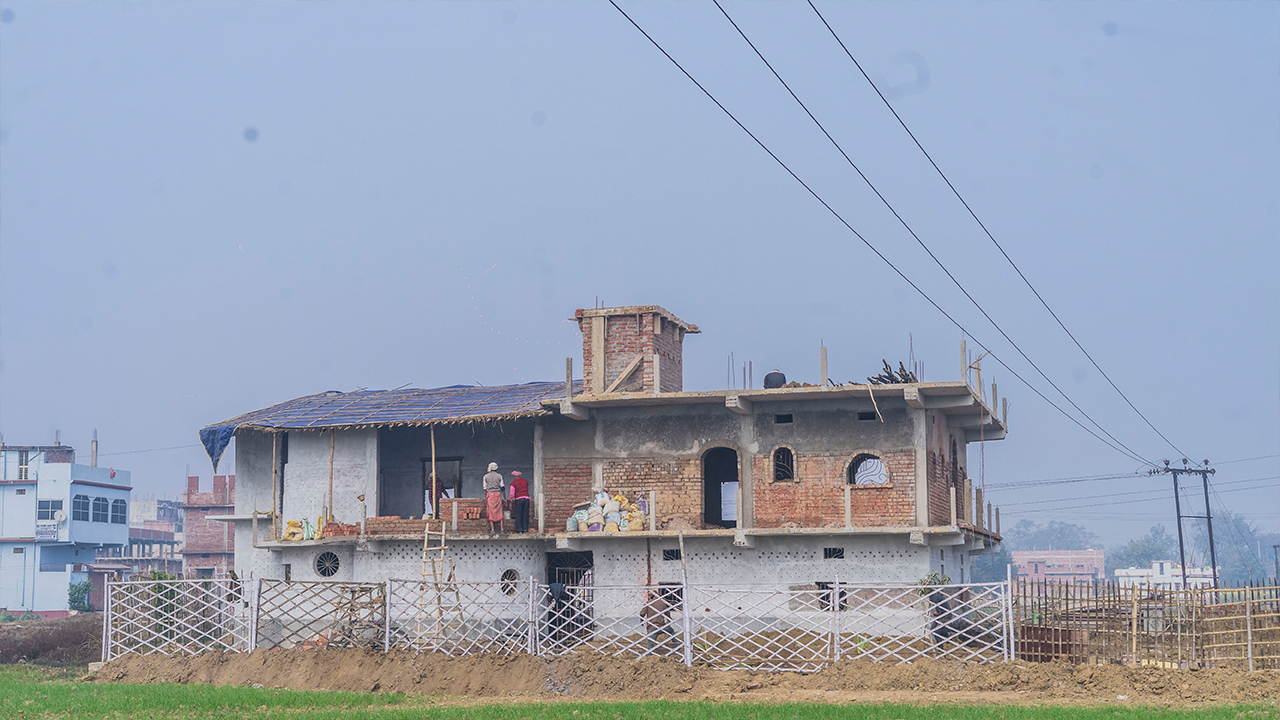
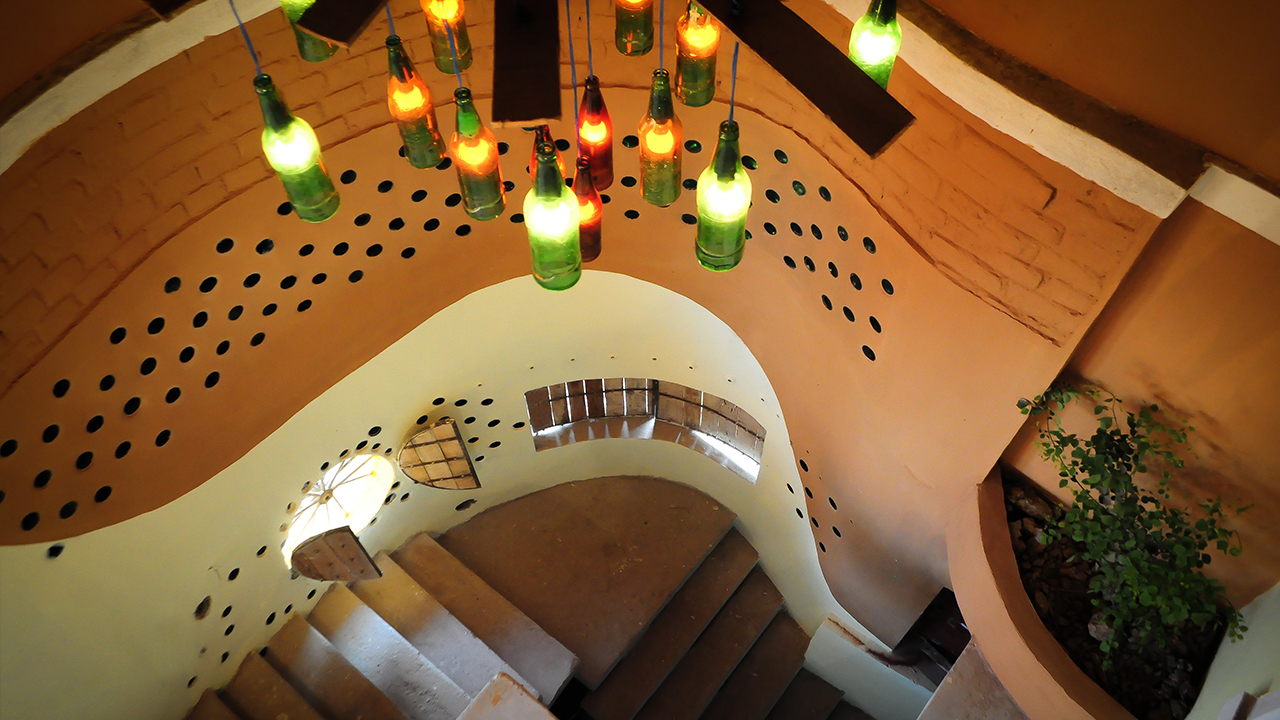
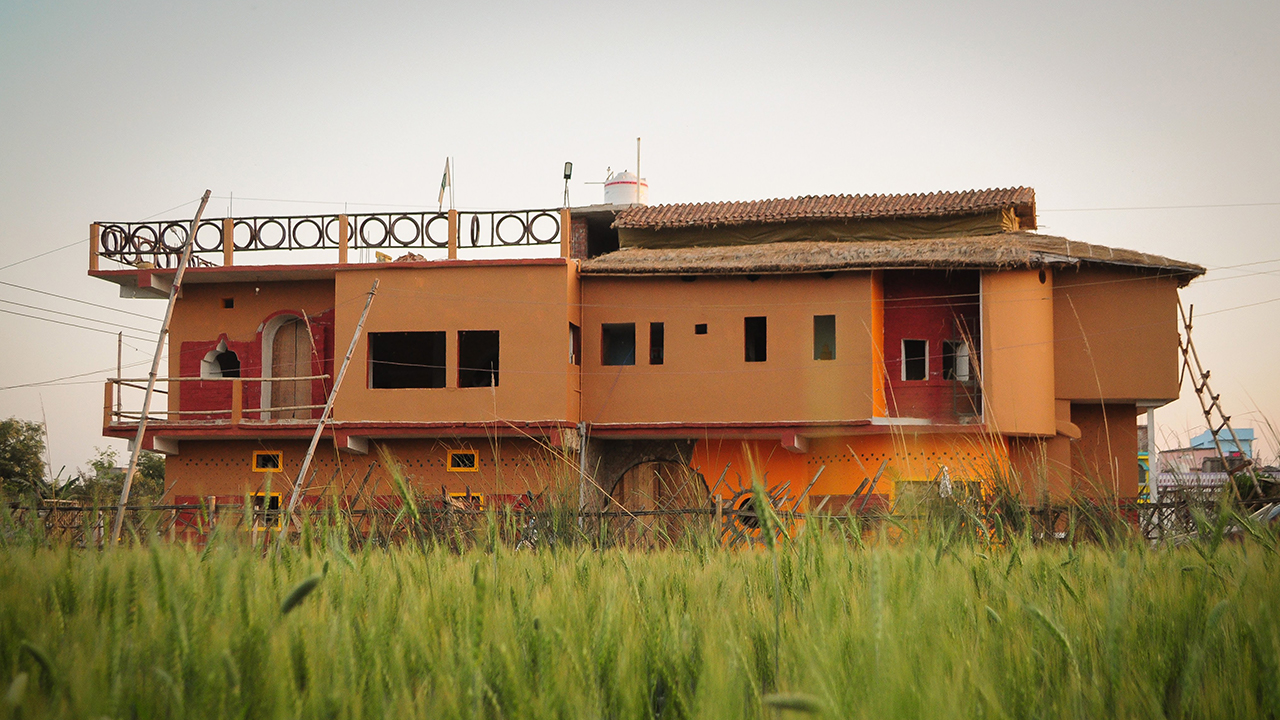
In March 2018, they left Buddy, the dog, with Prashant’s family after riding with him throughout India, and rode up to Nepal to collaborate with Himalayan Climate Initiative (HCI) to build a playground for change. They built an upcycled learning centre at the elementary school in Kagati village, 14 km from Kathmandu. The two also trained a local women’s group in upcycled design to be financially self-sufficient, and build affordable learning playgrounds.
After crossing China and Tibet, they reached Kyrgyzstan where they are currently working with another local community.
The power of human connection
[embed]http://https://www.youtube.com/watch?v=lcJiIpiErmc[/embed]
Each project done by Vasudhaiva Ride has been possible because of people. From finding the right collaborators and raising funds to gathering volunteers and garnering media supporters, Vasudhaiva Ride has lived its mission with the help of the global community. The project is entirely crowd-funded and relies on the generosity of people’s time, effort, and resources.
When they started, Ben and Prashant had an idealistic view of the power of human connection and thankfully their journey so far has revealed that the ideal of human compassion and connection is completely real and achievable.
You can support them here.
Follow the Vasudhaiva Ride:
https://www.facebook.com/Vasudhaivaride/
https://www.instagram.com/vasudhaivaride
A chat with Ben and Prashant
We had a chance to have a quick conversation with Ben and Prashant about their journey.
TOJ: What surprised you about humans during the Vasudhaiva Ride project?
Ben: I think the questions that were on our mind before we started the ride were: are people ready to make a shift? Is the average human who is aware of the large issues of the world ready to start changing the way they lived for a positive future? And I think what we found, which I suppose was a surprise, was that by and large, yes. Whether we were talking with farmers, city youth, international travelers, local rural Indians, or homeowners, everyone was very keen to connect with us and join us in the work we were doing.
This is why our projects were so successful - because no-one hesitated in helping us, in whatever way they could.
TOJ: How was the endeavour of community building challenging? What are some things that helped handle those challenges?
Ben: Certainly, especially in Bihar project, we were working in a region which was known for its conflict between social groups. We had several deathly shootings in our neighbourhood while we were there. Unemployed youth were pelting stones and killing multiple people at a train station, just 500m away from where we were staying and the same station where all our volunteers would arrive to. The context we were in was about violence between people and that’s one reason why we wanted to work in Bihar. One of the things that helped us with those challenges is Prashant. He is an extraordinarily natural community-builder. People in the West study this kind of thing and Prashant just does it.
We hired workers from different places and in the first few days, there was a showdown between the workers from Dhanbad and Arrah. The workers from Dhanbad came to us and said that they are going to kill us. Prashant went down to the field and he got all the workers together. He talked to them and said,”Look you all may be Bihari, but I’m also a Bihari. Noone messes around here.”
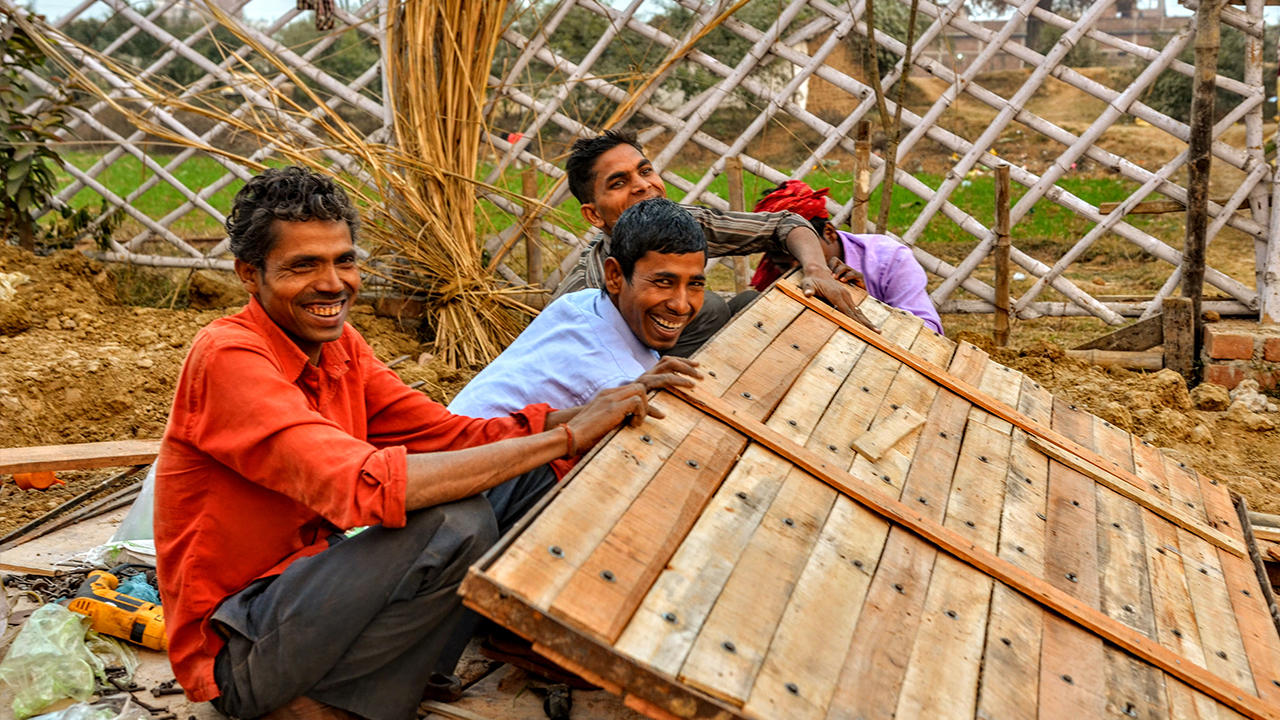
To zoom out of it, one of the ways we overcame such challenges was through the common vision we shared.
The story of Vasudhaiva Ride would make them REALIZE that what they are working towards is something that the whole world is watching. I think that led people look beyond than their local identity and engage in a truly global ENDEAVOR.
Prashant: The biggest challenge was to work on these projects in places that we don’t come from. We have been travelling to different places and hosting large-scale projects in unknown places with people from different countries. In one sense, the projects are for people we are serving in the local community, and in another sense, they are for volunteers and the global community. Working with people with a common vision is what made it easy to overcome this challenge.
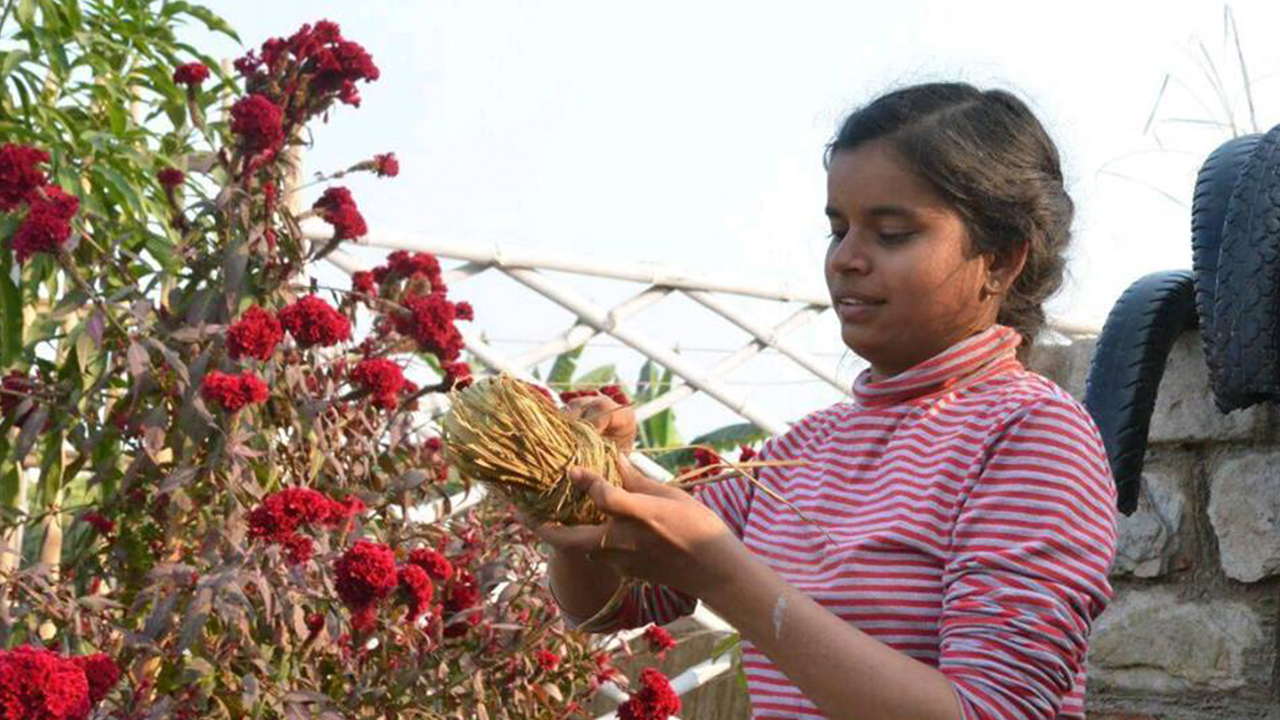
TOJ: Why do you think human connection is important? What is its purpose in the contemporary context and how has VR advocated its significance?
Ben: If you look into any study, you will see that humanity is the same all over. Human connection is about recognizing those commonalities as opposed to focusing on the differences. It’s one way of resolving conflict between peoples and by recognizing that larger connectedness we all share.
We are in a time now where, at once, human connection is more possible than ever. Yet we are also in a time where differences are exaggerated in media, or political and social systems. In such contradicting contexts, we feel our responsibility to advocate for human connection. Our vision of “Vasudhaiva Kuthamabakam” is about “one world, one family,” and in a family, you can have differences. The experience of a Bihari laborer would be very different from the volunteer from Czech Republic. But once you recognize those differences, you’re able to talk about them.
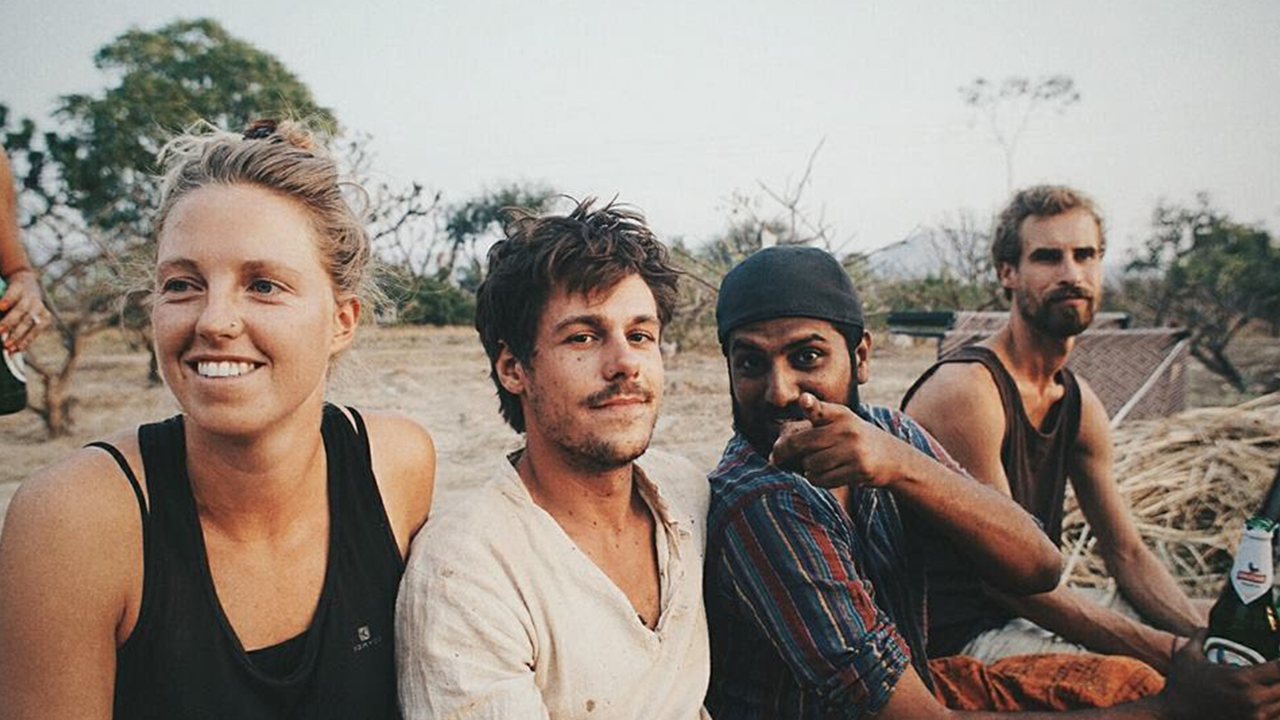
I think what we do in our projects is that we create spaces where people can talk together, share food together, teach each other customs about weddings, cooking, mourning and so on.
In our projects, we have seen people connecting on a very human level.
TOJ: What are some classic ways you’d bring people together? What worked and what didn’t work? How did you resolve when it didn’t work?
Ben: Just by hosting the project and living together to complete the project, we are bringing people together. More specifically, by sharing a vision with a team of people, be it Indian artists, privileged artists from the Western world, or labourers from rural India. What works is simple things – cooking, sharing, gifts, reciprocity of kindness. Bihari cook would invite volunteers for a Biryani and the same volunteers would share bread they brought all the way from Argentina. We didn’t have to do much to make those connections happen. We just brought people into a space, suggested a few norms of being open to new experiences, facilitated the process of people working together, and then we just let things arise. More than anything, that’s how the connections happened.
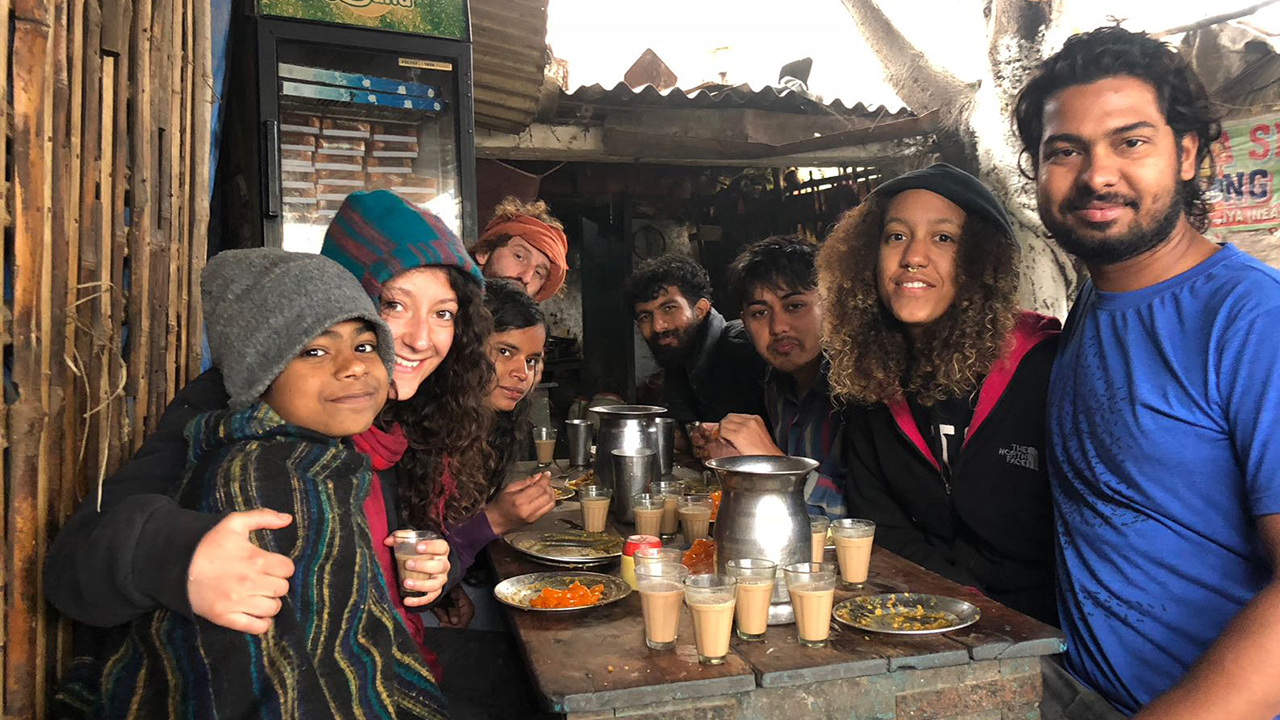
Sometimes, it didn’t work. Of course, there would be conflicts of personalities, cultures, or otherwise. We would talk to people involved and just ask the questions that needs to be asked in any conflict: what do you feel and what do you need? And always, we would come to a peaceful conclusion and people involved would come and work together to create. In that way, co-creation is a healing process.
TOJ: Can you elaborate on keeping your complete faith in the life of service?
Ben: To answer that question, I need to look at the major norms in the global, modern societies that push people away from a life of service. Being told that if you value your work, you should be paid for it. So what does it mean that we are not receiving any money? In fact, we are working harder than we have ever worked in our entire lives and we are going into debt. So the capitalist framework has definitely shaken our faith.
Another way of seeing it is that every single dollar or rupee that’s gone into Vasudhaiva Ride is used towards service in at-risk communities. That’s important to recognise and that is what gives us faith when it’s rainy.
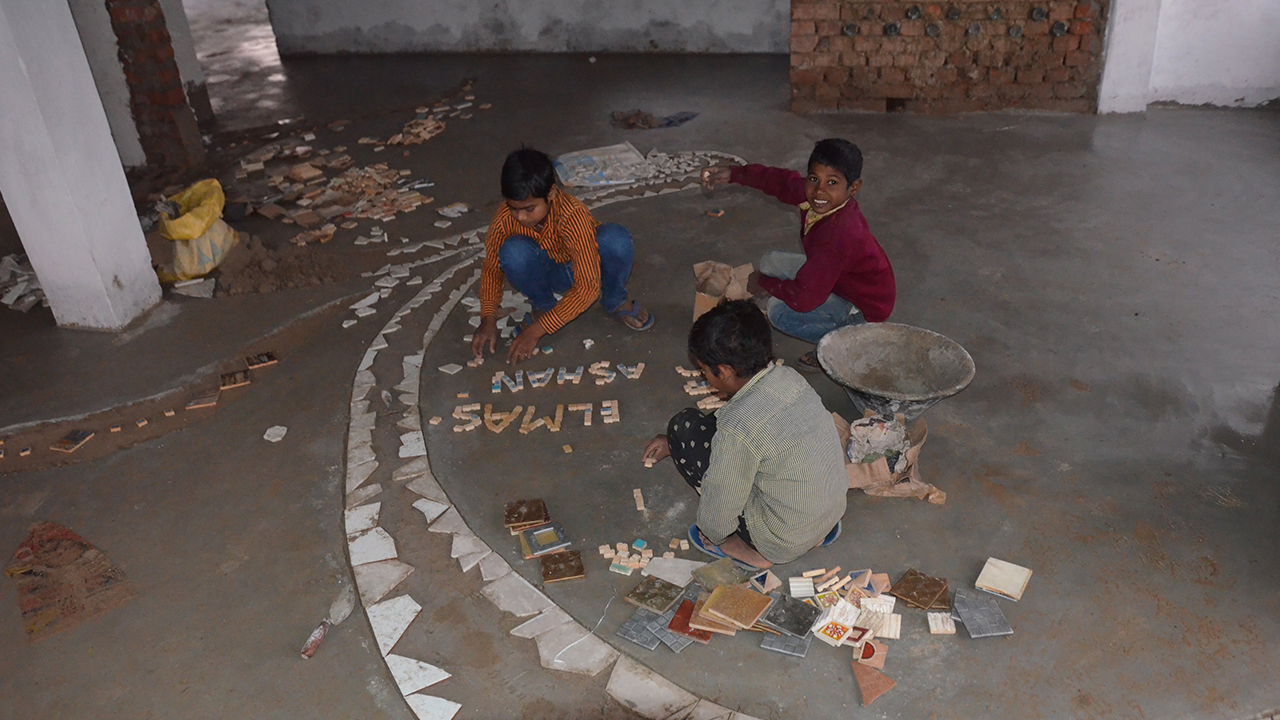
Prashant: I completely believe in the life of service and I encourage people to live this life. It’s not a new concept. All societies and the entire universe works on this principle – we take something from someone, and we give something in return. That’s how we maintain balance in the ecosystem.
TOJ: Please describe ways in which you and Prashant are similar and different and how that affected the project collaboration.
Ben: Prashant and I play the stereotypical roles of an easterner and westerner. At least, we used to. I come from a background of wilderness guide and academia where everything is planned on a spreadsheet, weeks in advance. Prashant is from a world of India and artists with little pre-planning but a strong vision and an intuitive sense of how to get there. Those two ways work together very well. Prashant is the visionary and I help him put down the vision onto paper and into a plan.
We are similar in extremely important, deeper ways. I met him at Khoj international artists residency in Pune and there was a power outage on the opening day. We ended up playing live music. So in terms of energy, spirit and soul, we are very similar. We connect very easily and have a strong foundation of trust and mutual understanding. We are also both optimistic and realistic and pretty hard to distress. Whether it’s a road accident we witnessed or facing potential violence in the region we were in, neither of us got distressed by that. Both of us have an appreciation for the larger goal, which keeps us grounded. Lastly, we are both very simple people with simple means and getting by with what we have.
TOJ: Can you describe the feeling of finishing a task given to a team of people and draw a comparison to the feeling of reaching the project finish line?
Prashant: You feel very satisfied when your imagination and vision come true with the hard work of all the people involved.
After finishing the day, I would take a walk around and think of what we have achieved. I feel that it’s the most important part of the project. It’s a time of learning, understanding, reflecting, and improving.
As for team work, we followed routines where people would break for meals, exercises, and discussions as they engaged throughout the day according to their experiences and choices of tasks. Every five or ten days, we would check with the team about how it’s going. My main responsibility has always been of seeing how we are getting closer to the vision.
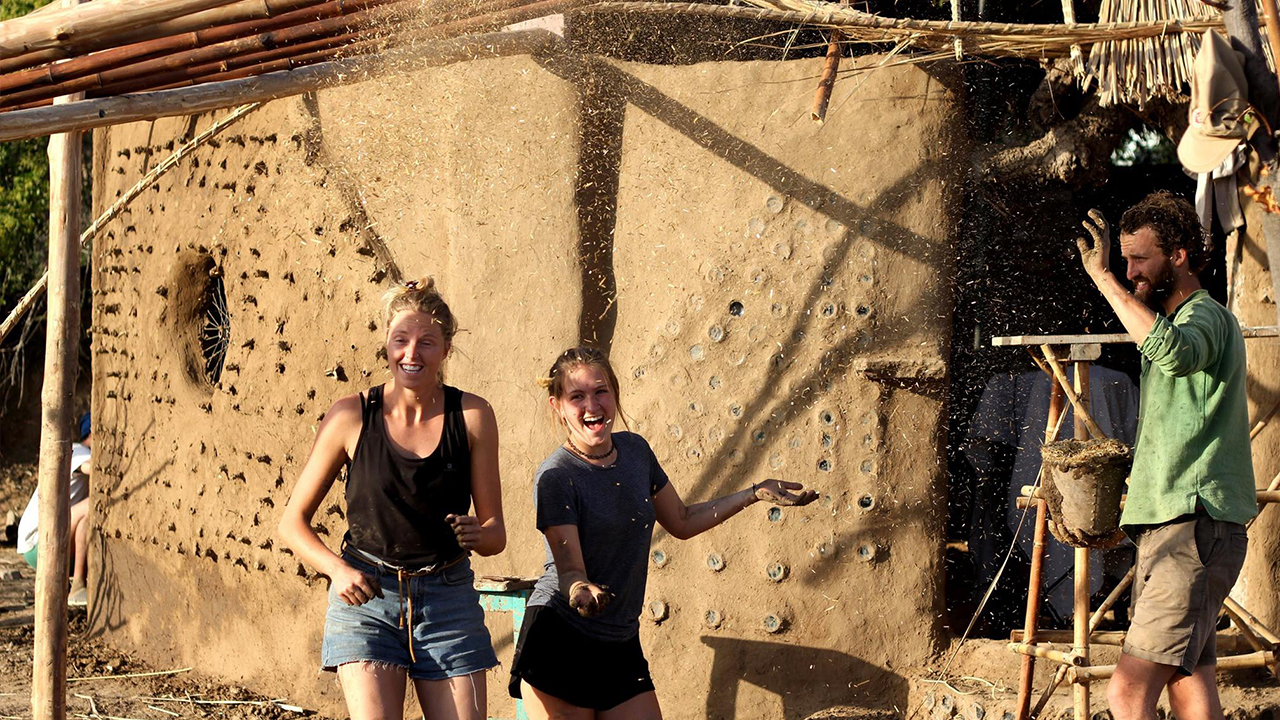
Every project brings its own set of challenges when it comes to the finishing line. Some finish earlier, others take much longer. But each project helps us get better at accepting the emergent nature of the task at hand.
TOJ: In what ways was building infrastructure from scratch different in each project? How was it influenced by the community you were working with?
Prashant: It was different for each project because of the diversity of culture, region, people, land, work styles and so on. When we did a project in Pushkar with a 24-day timeline with affordability in mind, we fastened the process of getting volunteers and worked according to project specifications. In the Bihar project, the space was different where things didn’t happen on time. Nepal was similar in that the work styles were different. But what was common in all the places is that we found people who are skilled at working with hands, and while working on the projects, we all managed to refine our skills.
The community influence also varies. The volunteers weren’t as skilled as the locals. The latter group defined the effectiveness and the timelines of the projects.
TOJ: Please highlight some of the most challenging and rewarding emergent moments of building something concrete with people from different backgrounds and age groups.
Prashant: Gathering different waste materials was both challenging and funny. Since Bihar is a dry state, for example, no one was ready to transport huge amounts of empty liquor bottles that were not even sent to a recycling factory. No drivers wanted to transport it without an authorized official from the government. So sourcing materials was very challenging. Another material we needed was sand and even that was not available for two months. So when we finally outsourced wasted liquor bottles and sand, we used them in construction during early mornings so that no one could see us with them. It was quite funny because it felt like we had smuggled gold or something.
The vision of making a house with waste made it easy to work with people from different cultures and ages.
For the locals, turning waste into resource was very new and they were also anxious about results. But finally, it was rewarding for them to discover its value as a low-cost and sustainable alternative. Now they even share it on social media.
All of this is basically emergence because there were no teams available. We found people over a period of 5-10 days for certain kinds of tasks. That’s what made it challenging and beautiful.
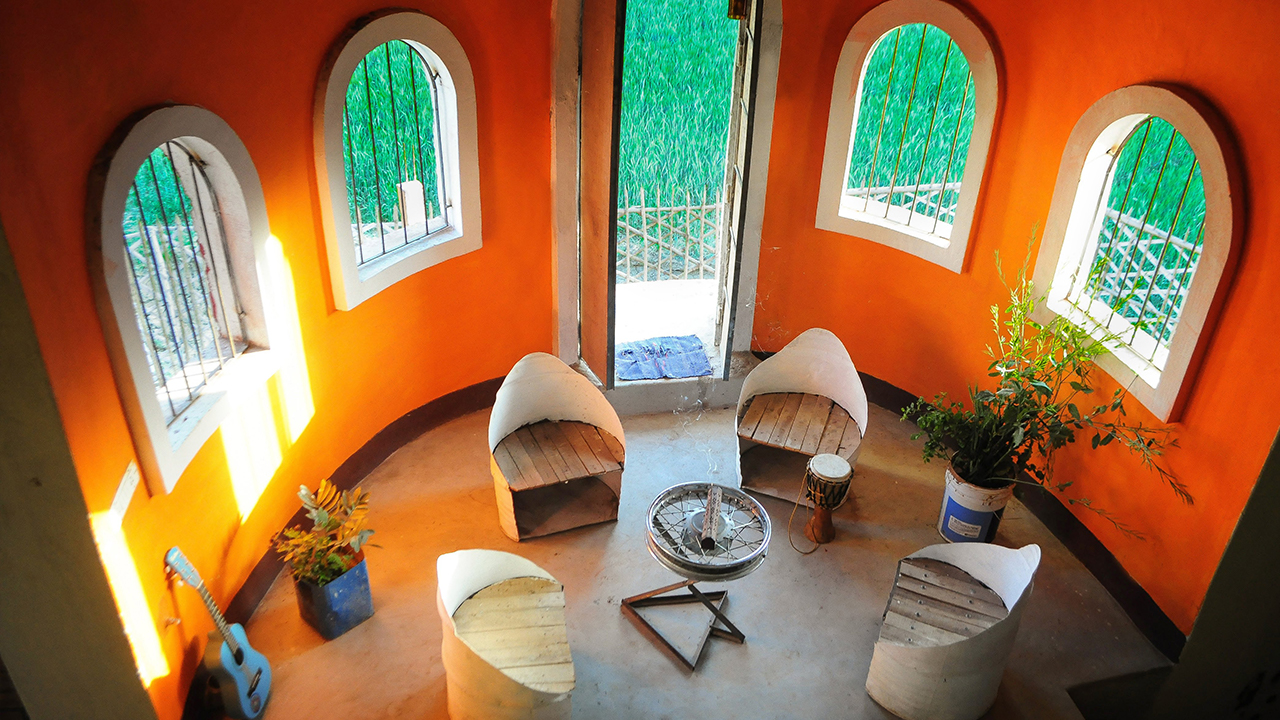
TOJ: In what ways did your past prepare and help you commit to your present?
Prashant: Whether it’s building cars with a team, starting a company from scratch, or doing a lot of technical work that involves hands-on effort, my past gave me a lot of confidence and experience to do bigger, better things. I feel that through Vasudhaiva Ride, I am refining my work in better ways and learning a lot, which will definitely be helpful in the future.
TOJ: Can you please elaborate on the synergies you find between riding motorcycles and doing community-led projects?
Prashant: They are both certainly very different. But I feel that doing a project while riding around the world is so much more fun because it helps us reach the weirdest geographic locations possible, whether it’s deep jungles or huge mountainous regions. For example, in Orissa, we were in Niyamgri hills in Dongria Kondh, and horses and motorcycles were the only way to get into the local community. Travelling by road on a motorcycle also helped me discover India so much more than I ever imagined. And of course, when your bike breaks down, you make new friends. People also look at you differently when you’re on a motorbike as opposed to traveling by plane. They see you as someone who has ridden for a long time to get to their community for a project-driven interaction and as one they can trust to work hard within their local context.
TOJ: This project is emergent, spontaneous, and adventurous at its core. How would you define the values and philosophy behind Vasudhaiva Ride in the context of adventure travel? In what ways does it connect to human connection and community living?
Prashant: Soon after the moment we met, Ben and I saw emergence happen. We decided that this journey will be project-driven and based on service throughout the world. It could have simply been a fun, motorbike journey across the world, but we knew that we wanted more.
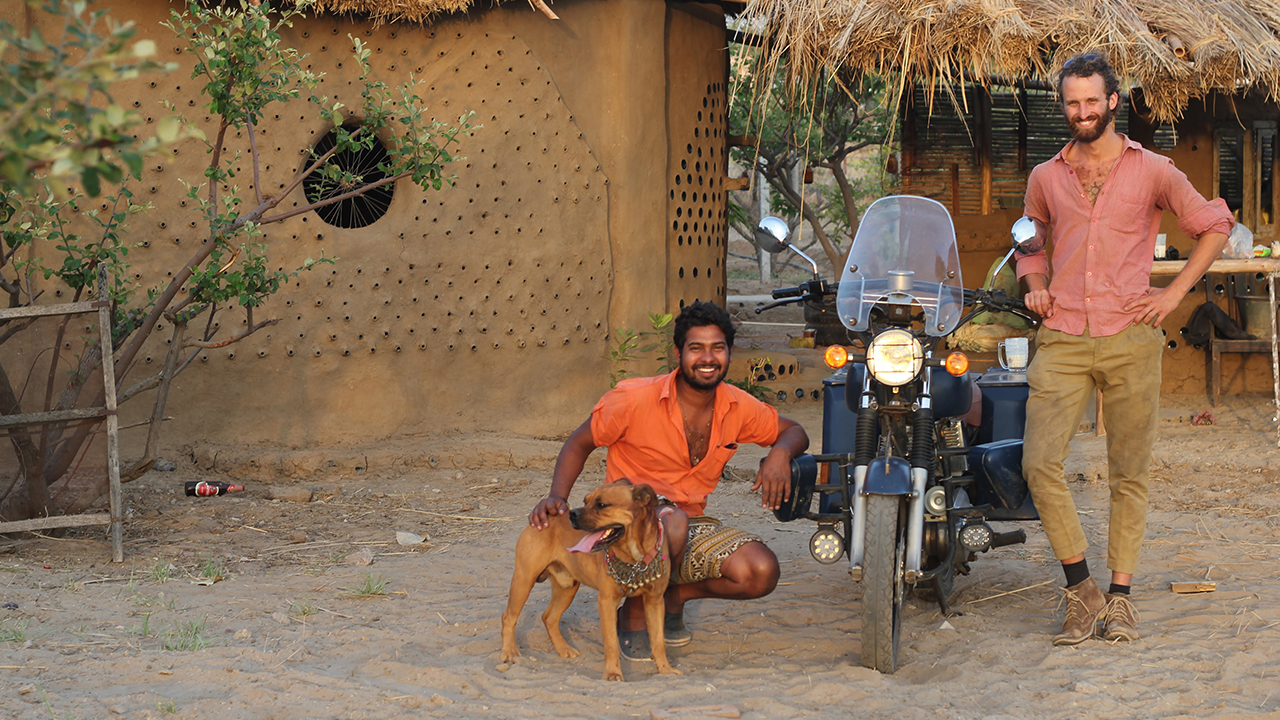
Because of the nature of our journey, adventure is inevitable. We went to the base of Mt. Everest and rode through the Himalayas, found ourselves in the mountains of Nepal and the deserts of Tibet to get to Kyrgyzstan. For us, service is embedded in adventure.
We were just two people in the beginning, with a dog. Now, we are 3000 people from all over the world. They all believed in our vision and have helped us in every way possible.
Every place that we reached and left behind, our people formed an emotional connection. All created long-term friendships and carried a hope with them for a better future.





Comments ()